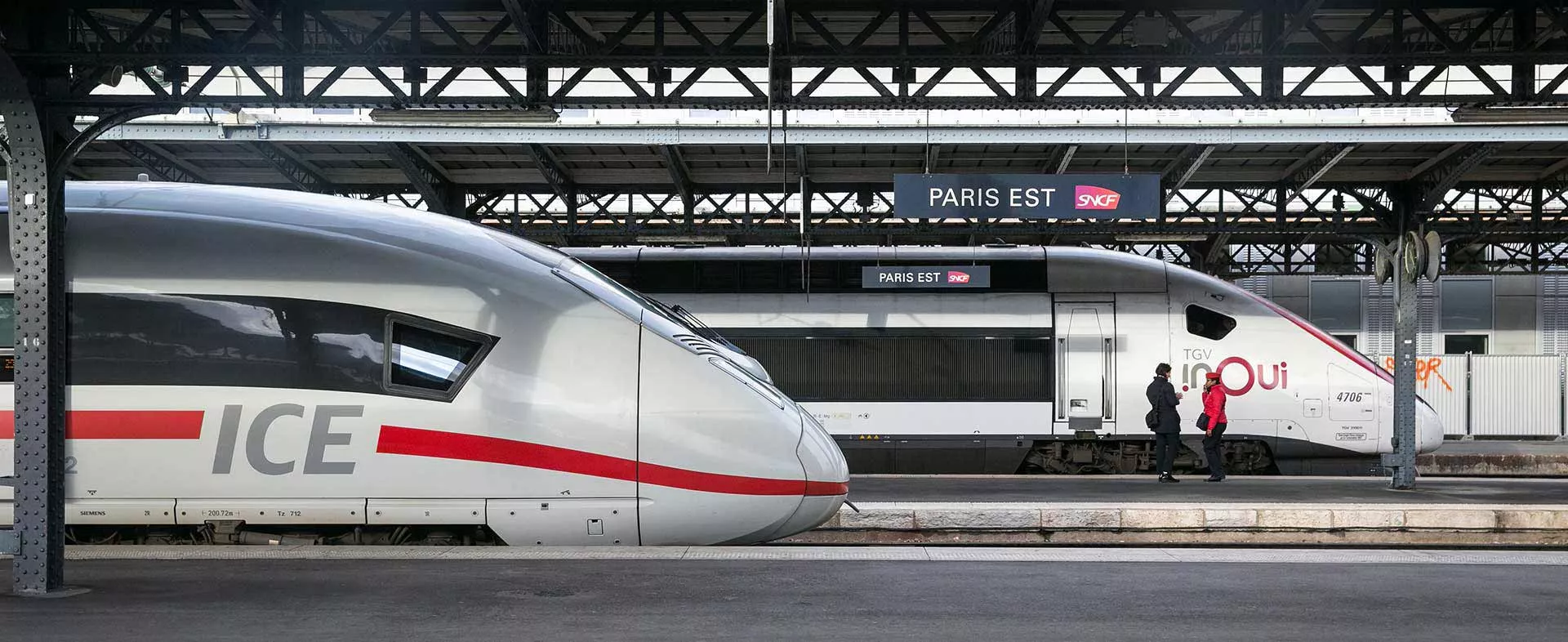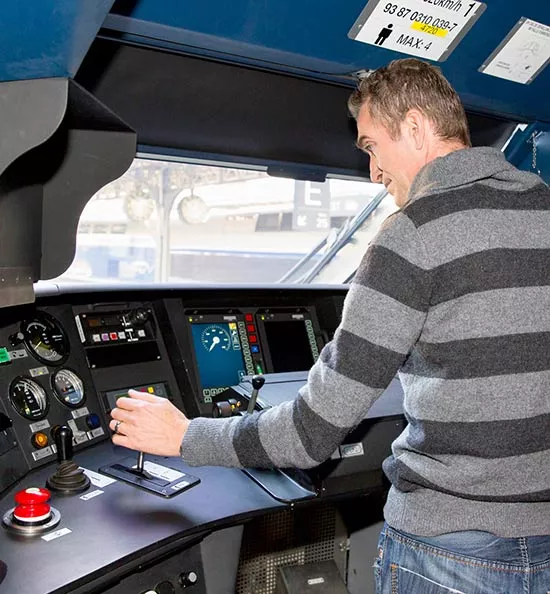
Bringing the European rail network to life
At the heart of European transport policy is the concept of a single railway area without borders or barriers. Technological innovation and harmonisation of standards are key to making it a reality.
Did you know?
Operating the same train on different national networks is a challenge, due to the many differences in rolling stock, infrastructures and regulations throughout Europe.

Building the single network
To boost this eco-friendly form of transport, the EU is working to create a single railway area. A massive push to harmonize the continent’s networks is underway, with support from both the public and private sectors.
SNCF’s commitment
The single network is more than a revolution in European rail. In a time of climate crisis, it has become an imperative. SNCF has a major role in this revolution, and we’re working with our European partners to make the single network a reality.
On track to seamless rail
For both freight and passenger rail, erasing the technical barriers that divide European countries is a vital task. At SNCF, we’re working on multiple fronts to make railway interoperability a reality.
What is interoperability?
Interoperability means that a train can run freely and safely on any line in the European Union. All EU member countries will need to join this effort, in a spirit of European cooperation.
The business case for interoperability
When any train can run anywhere on the continent, every operator will have access to every country in Europe. Over the long term, interoperability promises to cut costs for every player in the European rail sector.
New standards needed
Railway interoperability affects infrastructure, rolling stock, and guidelines for operations and authorization.
To harmonize them successfully, we need standards. Enter the technical specifications for interoperability (TSIs).
Innovation and regulations
Every innovation raises a question: do we need to create a new standard? Our experts assess every new technology so we can defend SNCF’s interests at European level.
Learn more in our interview with SNCF specialist Gilles Quesnel
How we’re building the single network—key projects

ERTMS
The European Rail Traffic Management System (ERTMS) will replace the patchwork of national signalling systems across the continent. This flagship project will significantly improve the network’s performance.
Linx4rail and Ocora
SNCF and other leading European rail operators have joined forces to develop a common rail system architecture. The aim is to cut costs and boost efficiency by replacing legacy rail systems with adaptable, scalable digital modules.
This new architecture relies on 2 projects in particular: LinX4Rail for the overall architecture of the rail system, and Open CCS On-board Reference Architecture (Ocora) for systems aboard trains.

Digital automatic coupling
Digital automatic coupling (DAC) will make freight rail more efficient by improving shunting operations and confirming train integrity. Combined with next-generation ERTMS, it will let us run more trains on the same network.
Telematics TSIs
Digital messaging is the backbone of communications between players in the rail industry.
Two TSIs aim to create shared standards for data exchange: TAP TSI for passenger applications and TAF TSI for freight.

FRMCS
The Future Railway Mobile Communication System (FRMCS) is the next-generation worldwide telecommunications system for rail. Based on powerful 5G technology, it will replace GSM-R, the 2G data transmission system now in use.
Our European partners
SNCF is contributing to the technical work required to make railway interoperability a reality. Our experts are involved in every step of the process.
European Union Agency for Railways
The European Union Agency for Railways (ERA) is tasked with drafting the technical specifications for interoperability. We’re working with ERA through rail industry organizations and national safety authorities.
The French State
During talks at the European Commission, we give the French State as much insight as possible into the impact of proposed regulations. This prepares France to vote on authorizing the TSIs with other member states when the talks are complete.
Public and private players
SNCF is part of an ecosystem of diverse public- and private-sector players—institutions, organizations and companies. All of these stakeholders are working together to harmonize Europe’s rail network.
Europe’s Rail
Europe’s Rail is a groundbreaking collaborative research programme backed by all of the major rail players in the EU. It represents an investment of €1.2 billion, with the European Commission contributing half that amount under Horizon Europe, a mechanism for funding research and innovation. Its mission: step up the pace of rail innovations and roll them out quickly, working around shared goals to deliver greener, more digitalized mobility in every part of Europe.
In the beginning
Construction of Europe’s railways was haphazard. Each country developed its own system, creating a patchwork of different track gauges, dimensions and power supply systems. To this day, the gauge for some lines in Spain is different from the gauge in France, but many discrepancies have gradually been eliminated. The European rail system is already on its way to interoperability.
Share the article